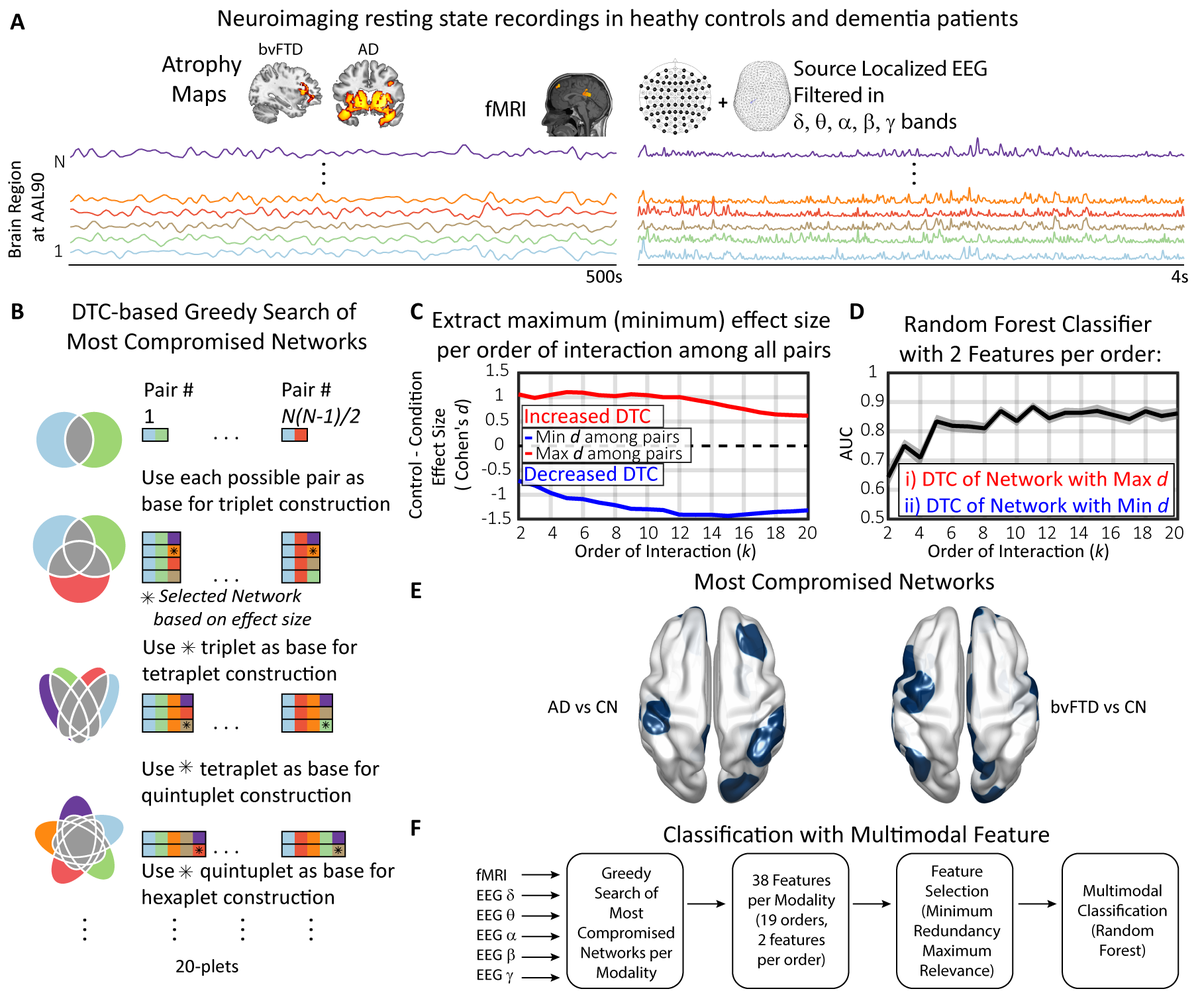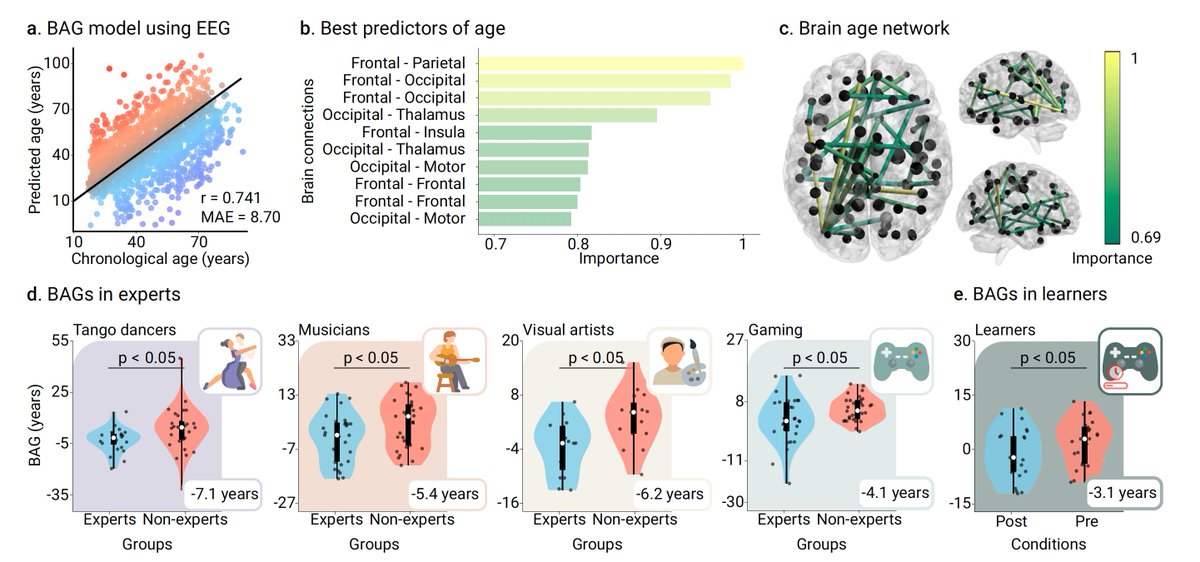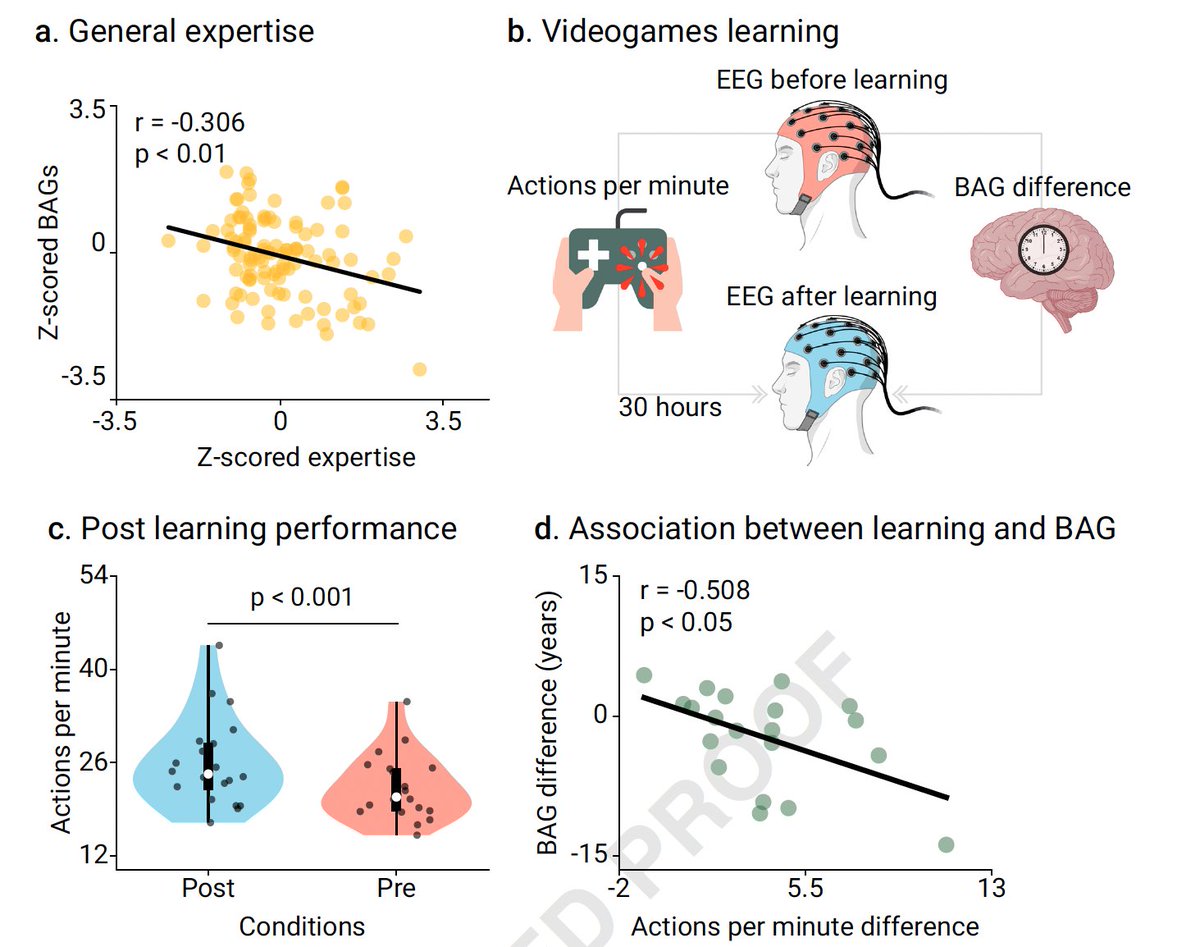High-order dynamics in brain networks & dementia are not well-captured by connectivity. We developed a new framework of high-order interactions (3-to-N plets) with information theory + greedy algorithm in #fMRI - #EEG across #AD & #FTD Paper doi.org/10.1016/j.nbd.… & 🧵👇1/5 

High-order functional connectivity (HOFC) at 3-15 plets yielded networks with large effect sizes for both modalities (fMRI and filtered EEG) and comparison (CN vs. AD, CN vs. FTD). Results included decorrelated networks for fMRI and EEG but also hyperconnectivity. 2/5 

The fMRI/EEG characterization of neurodegeneration revealed hypo/hyperconnectivity on high-order interactions. Regions such as the amygdala, the insula, and the frontal gyrus were associated with both effects, suggesting more complex processes in hub regions. 3/5 

HOFC is robust against the influence of age, education, and motor artifacts (fMRI head movements and EEG eye artifacts), as revealed by multivariate analyses. Classification accuracy was comparable with standard biomarkers. 4/5 

HOFC revealed + effect sizes, accuracy, and parsimonious characterization of AD & FTD compared to multiple pairwise metrics. Congrats #RubenHerzog & @_fernando_rosas @whelanlabTCD @SolFittipaldi @nanosanta @josecruzat @AgustinaBirba Seba Moguilner @ETagliazucchi @PavelPradoG 5/5 

• • •
Missing some Tweet in this thread? You can try to
force a refresh










